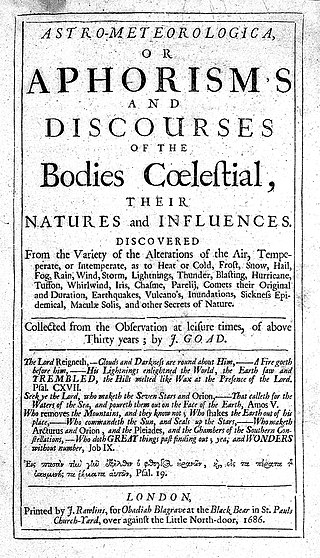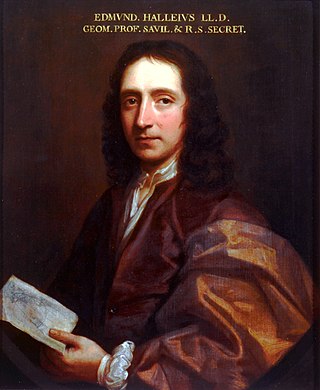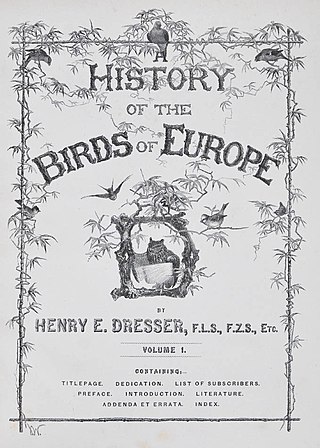Related Research Articles

John Ray FRS was a Christian English naturalist widely regarded as one of the earliest of the English parson-naturalists. Until 1670, he wrote his name as John Wray. From then on, he used 'Ray', after "having ascertained that such had been the practice of his family before him". He published important works on botany, zoology, and natural theology. His classification of plants in his Historia Plantarum, was an important step towards modern taxonomy. Ray rejected the system of dichotomous division by which species were classified by repeated sub-division into groups according to a pre-conceived series of characteristics they have or have not, and instead classified plants according to similarities and differences that emerged from observation. He was among the first to attempt a biological definition for the concept of species, as "a group of morphologically similar organisms arising from a common ancestor". Another significant contribution to taxonomy was his division of plants into those with two seedling leaves (dicotyledons) or only one (monocotyledons), a division used in taxonomy today.

A monsoon is traditionally a seasonal reversing wind accompanied by corresponding changes in precipitation but is now used to describe seasonal changes in atmospheric circulation and precipitation associated with annual latitudinal oscillation of the Intertropical Convergence Zone (ITCZ) between its limits to the north and south of the equator. Usually, the term monsoon is used to refer to the rainy phase of a seasonally changing pattern, although technically there is also a dry phase. The term is also sometimes used to describe locally heavy but short-term rains.

The ring ouzel is a mainly European member of the thrush family Turdidae. It is a medium-sized thrush, 23–24 centimetres (9.1–9.4 in) in length and weighing 90–138 grams (3.2–4.9 oz). The male is predominantly black with a conspicuous white crescent across its breast. Females are browner and duller than males, and young birds may lack the pale chest markings altogether. In all but the northernmost part of its range, this is a high-altitude species, with three races breeding in mountains from Ireland east to Iran. It breeds in open mountain areas with some trees or shrubs, the latter often including heather, conifers, beech, hairy alpenrose or juniper. It is a migratory bird, leaving the breeding areas to winter in southern Europe, North Africa and Turkey, typically in mountains with juniper bushes. The typical clutch is 3–6 brown-flecked pale blue or greenish-blue eggs. They are incubated almost entirely by the female, with hatching normally occurring after 13 days. The altricial, downy chicks fledge in another 14 days and are dependent on their parents for about 12 days after fledging.
John Machin was a professor of astronomy at Gresham College, London. He is best known for developing a quickly converging series for pi in 1706 and using it to compute pi to 100 decimal places.

Francis Willughby FRS was an English ornithologist, ichthyologist, mathematician and an early student of linguistics and games.
George Hadley was an English lawyer and amateur meteorologist who proposed the atmospheric mechanism by which the trade winds are sustained, which is now named in his honour as Hadley circulation. As a key factor in ensuring that European sailing vessels reached North American shores, understanding the trade winds was becoming a matter of great importance at the time. Hadley was intrigued by the fact that winds which should by all rights have blown straight north had a pronounced westerly flow, and it was this mystery he set out to solve.
The year 1660 in science and technology involved some significant events.
The year 1676 in science and technology involved some significant events.
The year 1669 in science and technology involved some significant events.

Astrometeorology or meteorological astrology is a pseudoscience that attempts to forecast the weather using astrology. It is the belief that the position and motion of celestial objects can be used to predict both seasonal climate and weather. Throughout most of its history astrometeorology was considered a scholarly tradition and was common in academic circles, often in close relation with astronomy, alchemy, meteorology, medicine, and other types of astrology.

Longwood is a settlement and a district of the British island of Saint Helena in the South Atlantic Ocean.
Events from the year 1686 in England.
Events from the year 1751 in Great Britain.
De Historia Piscium is a scientific book written by Francis Willughby and John Ray and published by the Royal Society in 1686. The book was the first illustrated work on fish to be published in England.

Illustrations of the Family of Psittacidae, or Parrots is an 1832 book containing 42 hand-coloured lithographs by Edward Lear. He produced 175 copies for sale to subscribers as a part-publication, which were later bound as a book. Lear started painting parrots in 1830 when he was 18 years old, and to get material for his book he studied live birds at the London Zoo and in private collections. The latter included those of Edward Smith Stanley, later 13th Earl of Derby, who had a large menagerie at Knowsley Hall, and Benjamin Leadbeater, a taxidermist and trader in specimens. Lear drew onto lithographic plates for printing by Charles Joseph Hullmandel, who was known for the quality of his reproductions of fine art.

The Monsoon of South Asia is among several geographically distributed global monsoons. It affects the Indian subcontinent, where it is one of the oldest and most anticipated weather phenomena and an economically important pattern every year from June through September, but it is only partly understood and notoriously difficult to predict. Several theories have been proposed to explain the origin, process, strength, variability, distribution, and general vagaries of the monsoon, but understanding and predictability are still evolving.

EdmondHalley was an English astronomer, mathematician and physicist. He was the second Astronomer Royal in Britain, succeeding John Flamsteed in 1720.
Edward Haynes or Haines was an English astronomer and Fellow of the Royal Society.

A History of the Birds of Europe, Including all the Species Inhabiting the Western Palearctic Region is a nine-volume ornithological book published in parts between 1871 and 1896. It was mainly written by Henry Eeles Dresser, although Richard Bowdler Sharpe co-authored the earlier volumes. It describes all the bird species reliably recorded in the wild in Europe and adjacent geographical areas with similar fauna, giving their worldwide distribution, variations in appearance and migratory movements.

The Wonderful Mr Willughby: The First True Ornithologist is a 2018 biography, written by Tim Birkhead, about Francis Willughby (1635–1672), an English ornithologist, ichthyologist, entomologist, and Fellow of the Royal Society. Birkhead's work is the first book-length biography of Willughby.
References
- ↑ Mayr, Ernst (1982). The Growth of Biological Thought: diversity, evolution, and inheritance . Cambridge, Massachusetts: Belknap Press. p. 256. ISBN 0-674-36445-7.
- ↑ Egerton, Frank N. (October 2005). "A History of the Ecological Sciences, Part 18: John Ray and His Associates Francis Willughby and William Derham" (PDF). Bulletin of the Ecological Society of America. 86 (4): 301–313. doi:10.1890/0012-9623(2005)86[301:ahotes]2.0.co;2 . Retrieved 2011-04-26.
- ↑ Halley, E. (1686). "An Historical Account of the Trade Winds, and Monsoons, observable in the Seas between and near the Tropicks, with an attempt to assign the Physical cause of the said Winds". Philosophical Transactions of the Royal Society . 16. London: 153–168. doi:10.1098/rstl.1686.0026.
- ↑ McConnell, Anita (2004). "Machin, John (bap. 1686?, died 1751)". Oxford Dictionary of National Biography. Oxford University Press. doi:10.1093/ref:odnb/17533 . Retrieved 2007-06-26.(subscription or UK public library membership required)